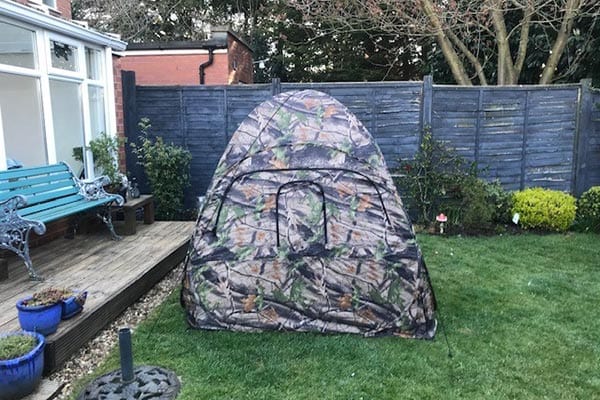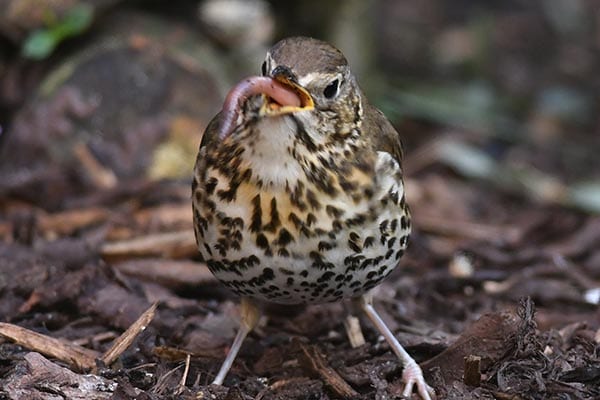Nature photography tips for your garden.

Nick Lane
I spend a lot of my spare time capturing the wonders of nature. With the current Coronavirus restrictions in place my adventures have been limited, but it hasn’t stopped me taking in the nature in my garden. Here are some tips on how you can take good nature photography in your garden…
Planning is key
Firstly, identify where birds come to in the garden. Is it for bird feeders? Or perhaps they visit certain trees or shrub areas?
Look at times when visits occur. Dawn, mid-morning, mid-day, mid-afternoon, evening, or dusk?
Keep a record of your target bird(s) visiting times. However, be mindful of the available light or sun at these times and think of shadow and backlighting.
Get them in the right position
If you need the birds to feed in a certain area, consider baiting them with bird food or feeders. We have a really good guide on how to make bird feeders at home here. However, I would suggest keeping food items out of frame where possible. It doesn’t always look great in professional nature photography unless this is the subject you want to focus on.
Try putting fruit out to attract the birds. I have a male blackbird who loves apple. However, if you have dogs be aware some fruits such as grapes and raisins are toxic. So make sure you check before leaving anything out. Remember, variety is the spice of life and different foods will attract different birds
Perfecting the backdrop
Consider how you can use your surroundings as a background or prop. Using something like branches placed at a certain angle can help create a desired image.
Birds will need to become accustomed to new items in the garden first, so make sure you place them out some time before you plan to take a picture. Perches should be seasonal if possible.
You can create your own backdrop by painting or dying an old sheet and suspending it over a wooden frame.
If you use several bird feeders, think about removing all but one when photographing. Having them all in place will create natural queues with birds perching on branches or props waiting for a turn at the feeder. Although it may seem really exciting to have so many birds at one time, this can make your nature photography look cluttered.
You can create a ground drinker using an old plant pot base or even be adventurous and dig out a small drinking area in a part of the garden. It doesn’t have to be very big. However, ensure it is kept filled with fresh water. A foot square and only a couple of inches deep is enough for the birds to drink from.

Get your position right
Consider your position for the shot. Are you going to take it through a kitchen window or sat in a part of the garden? Perhaps you could set up a hide?

Firstly, set up your camera prior so that only minor adjustments are needed on the day. I have been using the manual setting a lot recently to give me full control over ISO exposure and aperture. Although in most cases, aperture priority mode will do the job for you.
Think about the type of nature photography you want. Is it static birds on a perch or in flight? This will dictate your shutter speed which will ultimately dictate ISO and aperture settings.
Static birds on a perch will give most of us much more flexibility with ISO and shutter speed. However, birds in flight will require a much faster shutter speed of at least 1/250 of a second.
One way to compensate shutter speed for birds on the wing is to use an external flash either on the camera or set up on a tripod and remotely fired. Be creative and try using a slow shutter speed to create a blurred effect.
You will find it easier to focus on a single point, perhaps the eye(s).

Nice blurred background

Cluttered background
Top 10 tips
- Use a telephoto lens. If you don’t have a large lens, consider a teleconverter.
- A tripod can really help with stability.
- Use flashes and remotes if you have them.
- Use clamps to hold branches secure or plant matter in the background out the way during the shoot.
- Know your camera settings and buttons. Practice first!
- Don’t forget your notebook and pencil to record the times of visits and birds.
- Check your kit, ensure batteries are full and you have plenty of memory available.
- Keep lens clean.
- Know your birds. We have a bird identification sheet in our Young Shot activity area.
- Be patient. Good nature photography takes time.
